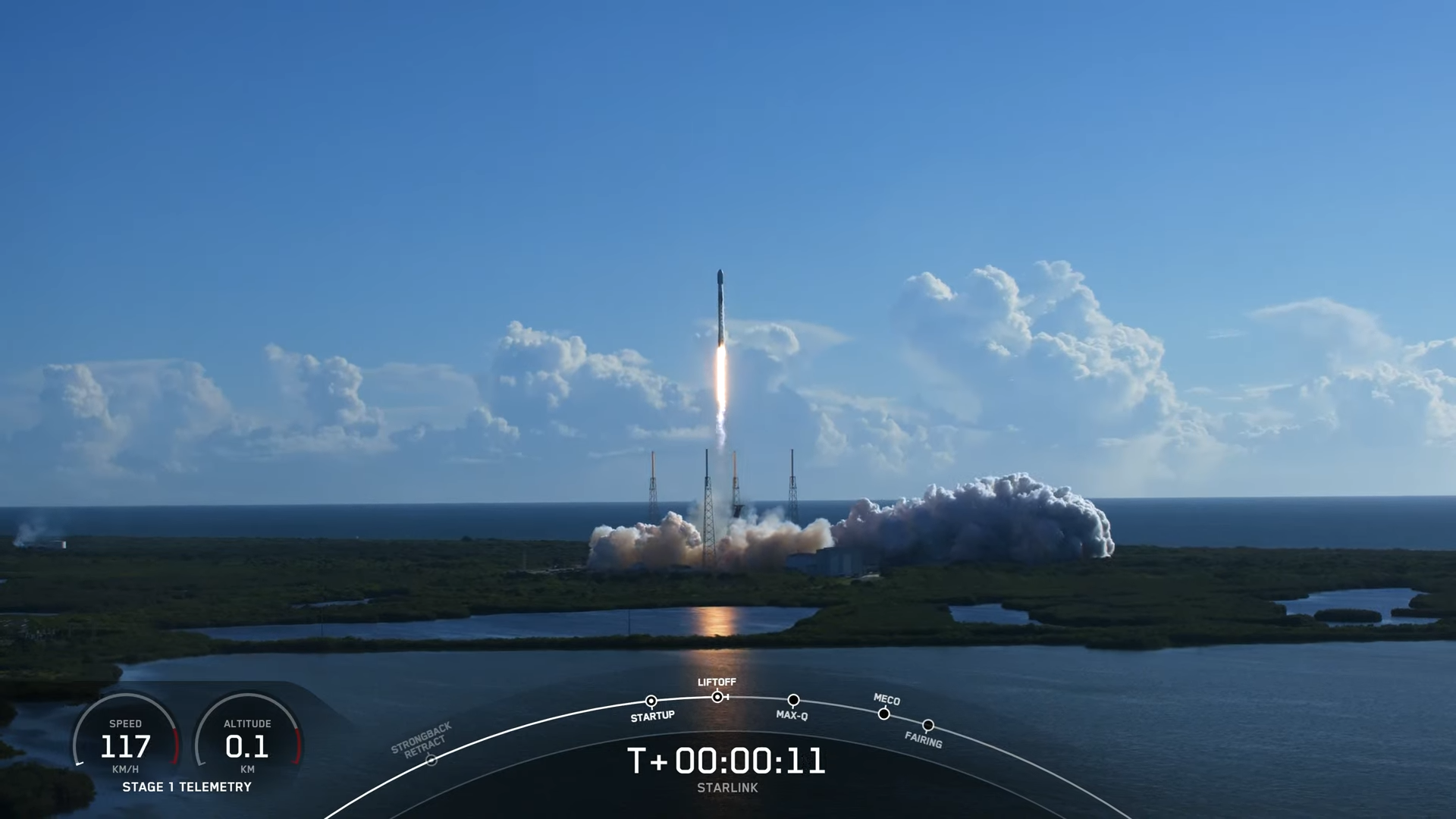
In a weekend game of musical chairs, SpaceX has kicked off June with a successful Sunday launch of a flight-seasoned Falcon 9 from storied Space Launch Complex (SLC)-41 at Cape Canaveral Space Force Station, Fla., as a second booster awaits liftoff later today from Pad 39A at the Kennedy Space Center (KSC), carrying a Cargo Dragon to the International Space Station (ISS) for the CRS-28 mission. The veteran B1078 core—making her third launch, having entered service earlier in 2023—took flight at 8:20 a.m. EDT, laden with 22 second-generation Starlink “V2 Mini” internet communications satellites.
With CRS-28 targeting liftoff at 5:12 p.m. EDT, today might see a new record of only three hours and 52 minutes between a pair of Falcon 9 launches, and a new record for two launches from the Space Coast.
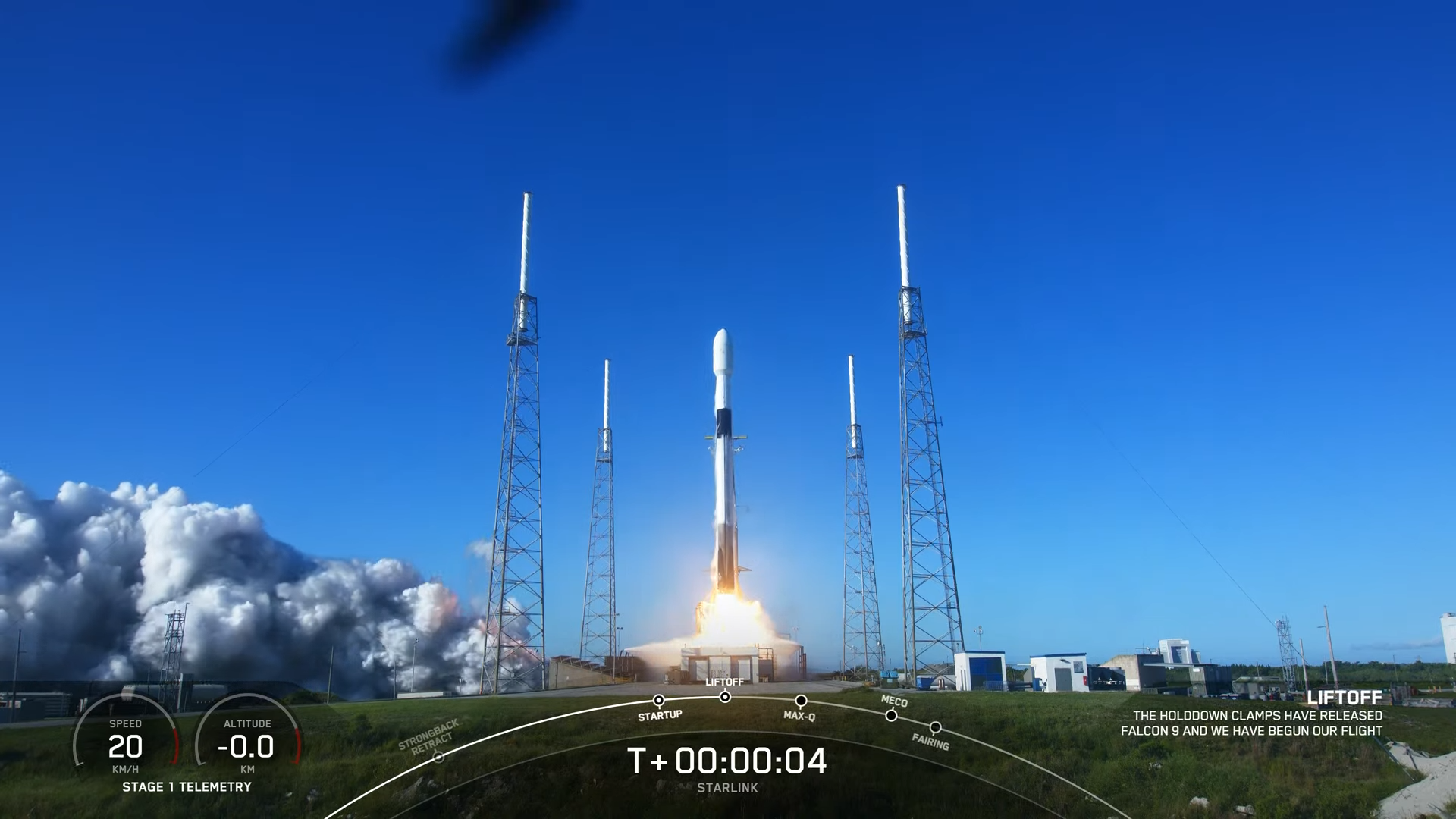
Sunday’s liftoff kicks off a busy June, which may see up to eight Falcon 9 launches for customers ranging from Germany’s Armed Forces, the Space Development Agency (SDA), Indonesia’s Pasifik Satelit Nusantara (PSN) and SpaceX’s own rapidly growing flotilla of Starlink satellites. With this morning’s flight, SpaceX has flown 37 Falcon-class vehicles—including a pair of triple-barreled Falcon Heavies—inside 2023’s first six months.
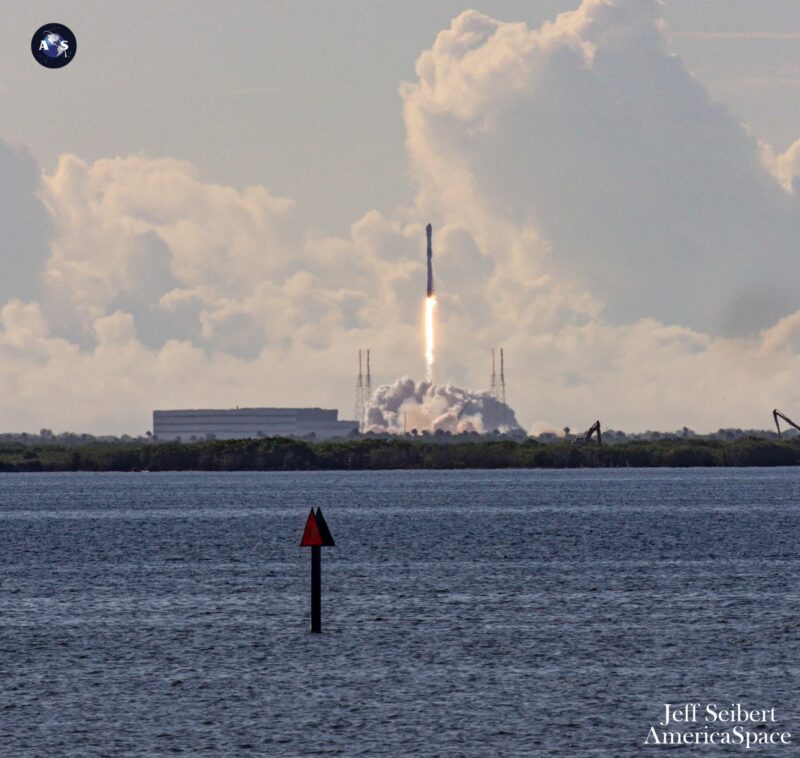
Even last year’s record-setting 61-strong haul of missions took SpaceX until mid-August to reach 37 launches. And in 2021, the Hawthorne, Calif.-based organization managed 31 launches across an entire calendar year, an indicator of its rapidly increasing flight cadence and growing confidence as reusability statistics creep upward. Averaging a launch every 4.1 days, compared to one every 11.8 days in 2021 and one every 5.9 days last year, this accomplishment edges SpaceX ever closer to CEO Elon Musk’s goal of up to a hundred flights by the end of 2023.
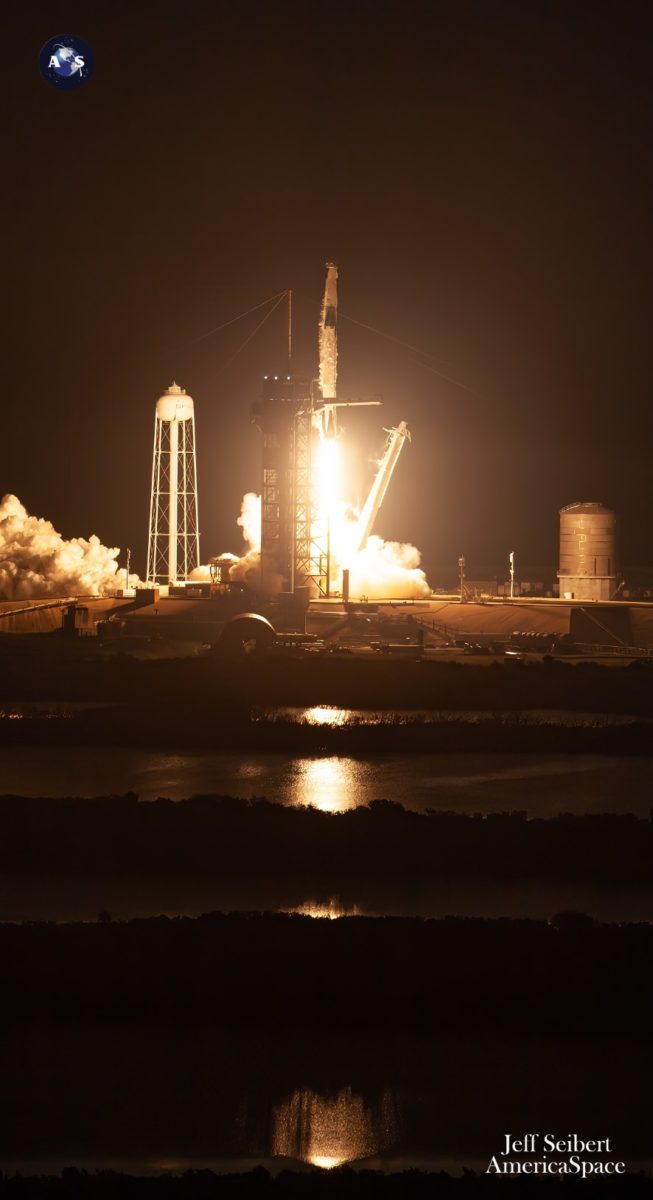
Flying this morning’s mission was B1078, which entered service in March to lift Dragon Endeavour and her Crew-6 quartet of NASA astronauts Steve Bowen and Warren “Woody” Hoburg, together with Russian cosmonaut Andrei Fedyayev and Sultan Al-Neyadi of the United Arab Emirates (UAE) to the ISS for a half-year increment as part of Expeditions 68/69. More recently, B1078 flew a second time in late April to deliver a pair of Boeing-built O3b mPOWER broadband satellites into a 5,000-mile-high (8,000-kilometer) Medium Earth Orbit (MEO).
In readiness for the flight, the Autonomous Spaceport Drone Ship (ASDS), “Just Read the Instructions”, departed Port Canaveral last week, bound for a recovery position about 400 miles (640 kilometers) offshore in the Atlantic Ocean. Original plans called for the CRS-28 mission to fly first at 12:35 p.m. EDT Saturday, but a bleak 30-percent probability of acceptable weather on the Space Coast prompted teams to stand down and retarget its launch for the backup opportunity at 12:12 p.m. EDT Sunday.
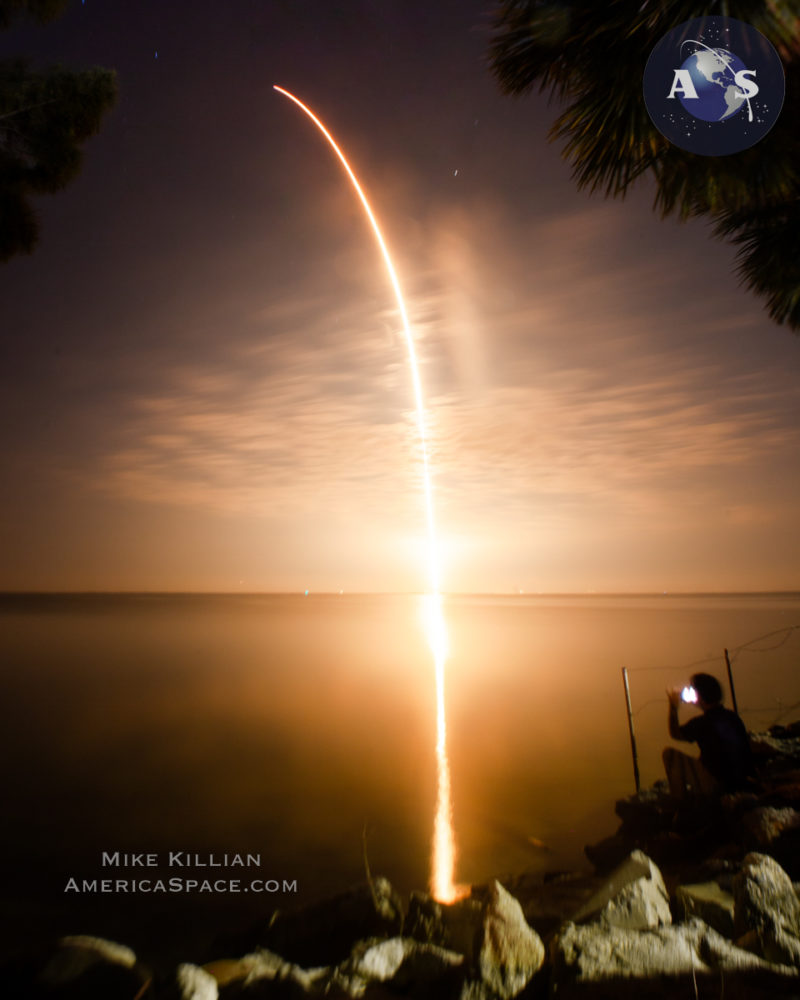
The weather picture, already hampered by showers and storms, has not been aided by the emergence of Tropical Storm Arlene. The storm emerged as an area of disturbed weather last week over the Gulf of Mexico, organizing into Tropical Depression (TD2) on Thursday, by which time it had moved off the west coast of South Florida, before strengthening into the newly named Arlene by Friday.
However, dry atmospheric and windshear conditions precluded Arlene from intensifying further as it drifted southward through the Gulf. By Saturday afternoon, it had weakened back into a tropical depression state and degenerated into a remnant low.
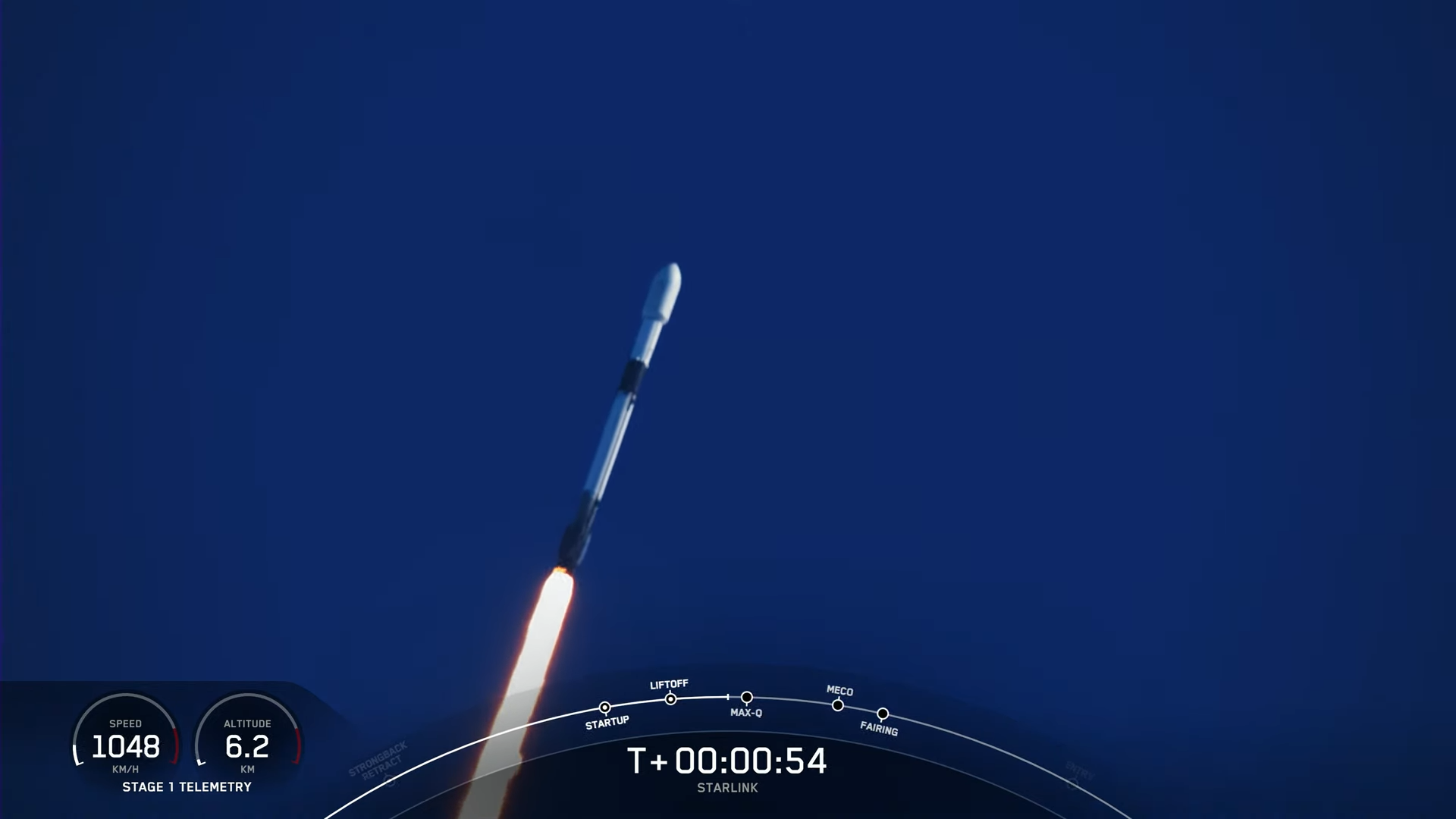
But despite the short-lived threat posed by Arlene, the meteorological picture for Sunday appeared iffy at best, hovering around 50-50, with slight deterioration to only 40-percent favorability by Monday. In a Saturday update, the 45th Weather Squadron at Patrick Space Force Base noted “abundant moisture and upper-level trough still in place”, with period of onshore-moving showers and storms reaching their “highest coverage in the first half of the day, before activity focuses more inland in the afternoon”.
SpaceX initially aimed for an opening T-0 at 5:56 a.m. EDT launch, but with weather conditions hovering around 15-percent-favorable, it elected to forego this and two other T-0 points at 6:46 a.m. and 7:36 a.m. and realign instead for the 8:20 a.m. closure of Sunday’s window. In a true demonstration of the “turn-on-a-dime” changeability of the Florida weather, by 7 a.m. conditions had about-turned to 90-percent-favorable, although teams remained focused on a potential violation of upper-level winds.
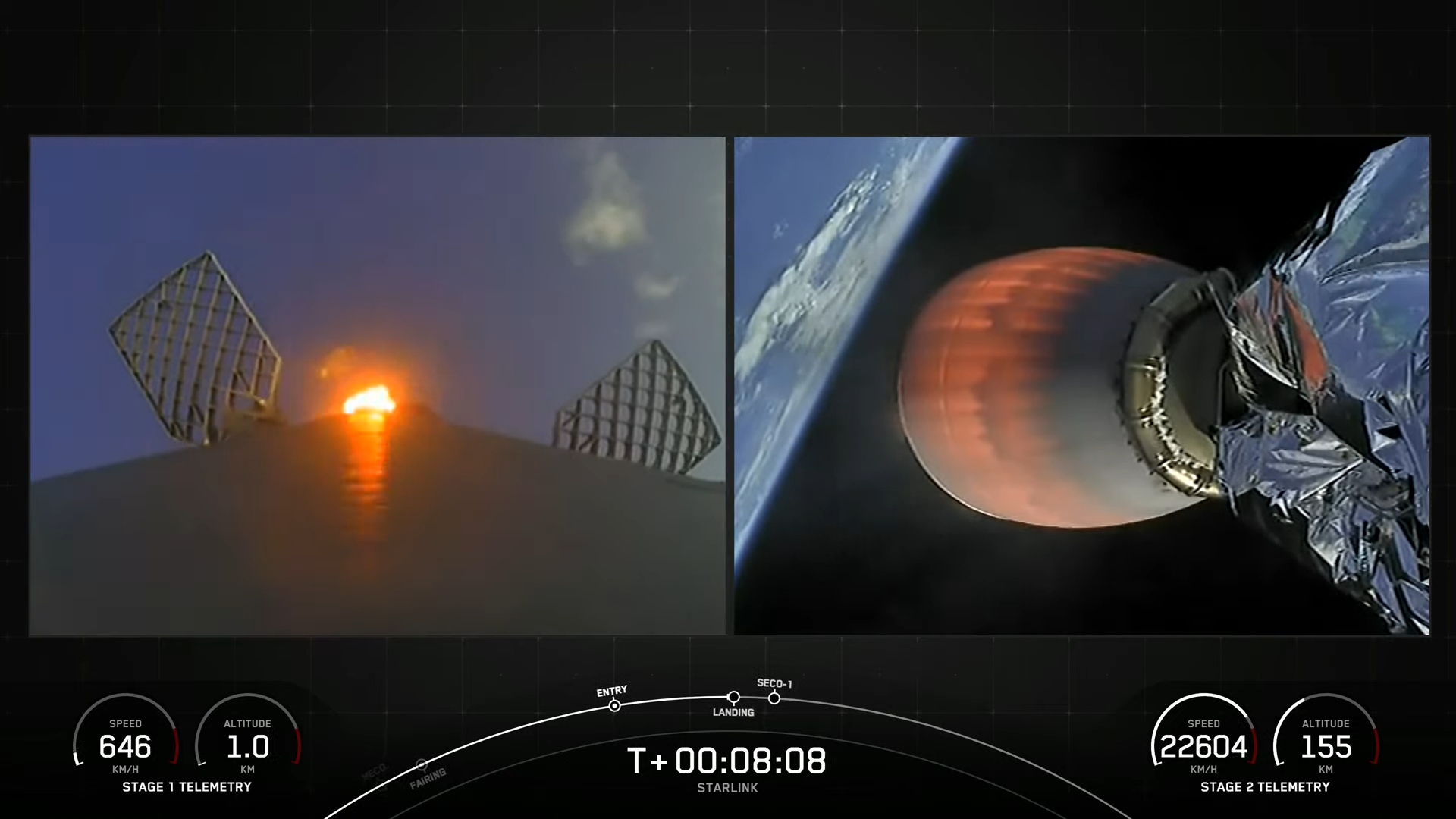
B1078 duly rose from SLC-40 at 8:20 a.m. EDT, her nine Merlin 1D+ engines powering into the pre-dawn darkness for the opening 2.5 minutes of flight. The core then separated from the stack and descended to a smooth landing atop JRTI some 8.5 minutes after launch.
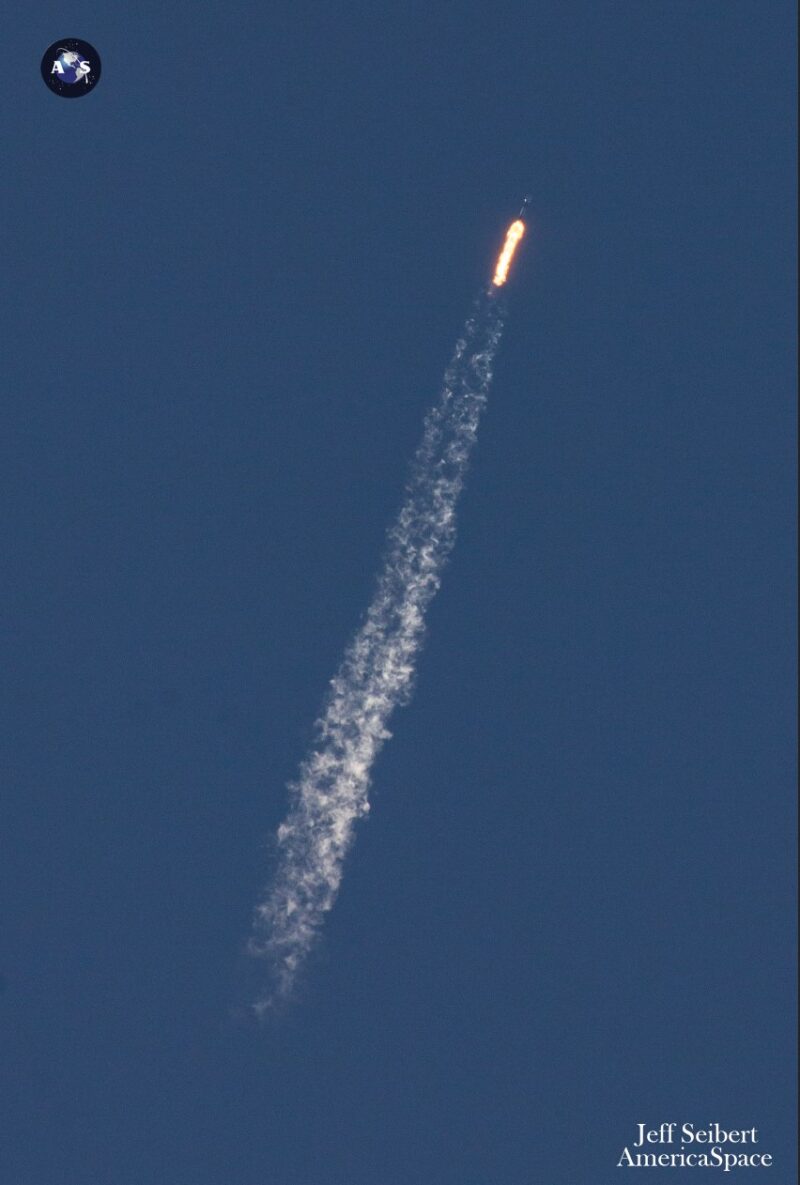
The baton then passed to the second stage’s single Merlin 1D+ Vacuum engine which executed a standard six-minute “burn” to lift the fourth batch of Starlink V2 Mini internet communications satellites uphill. As this AmericaSpace article was being prepared, the 22 satellites—which weigh around 38,800 pounds (17,600 kilograms) in total—were targeting deployment about 65 minutes into the mission.
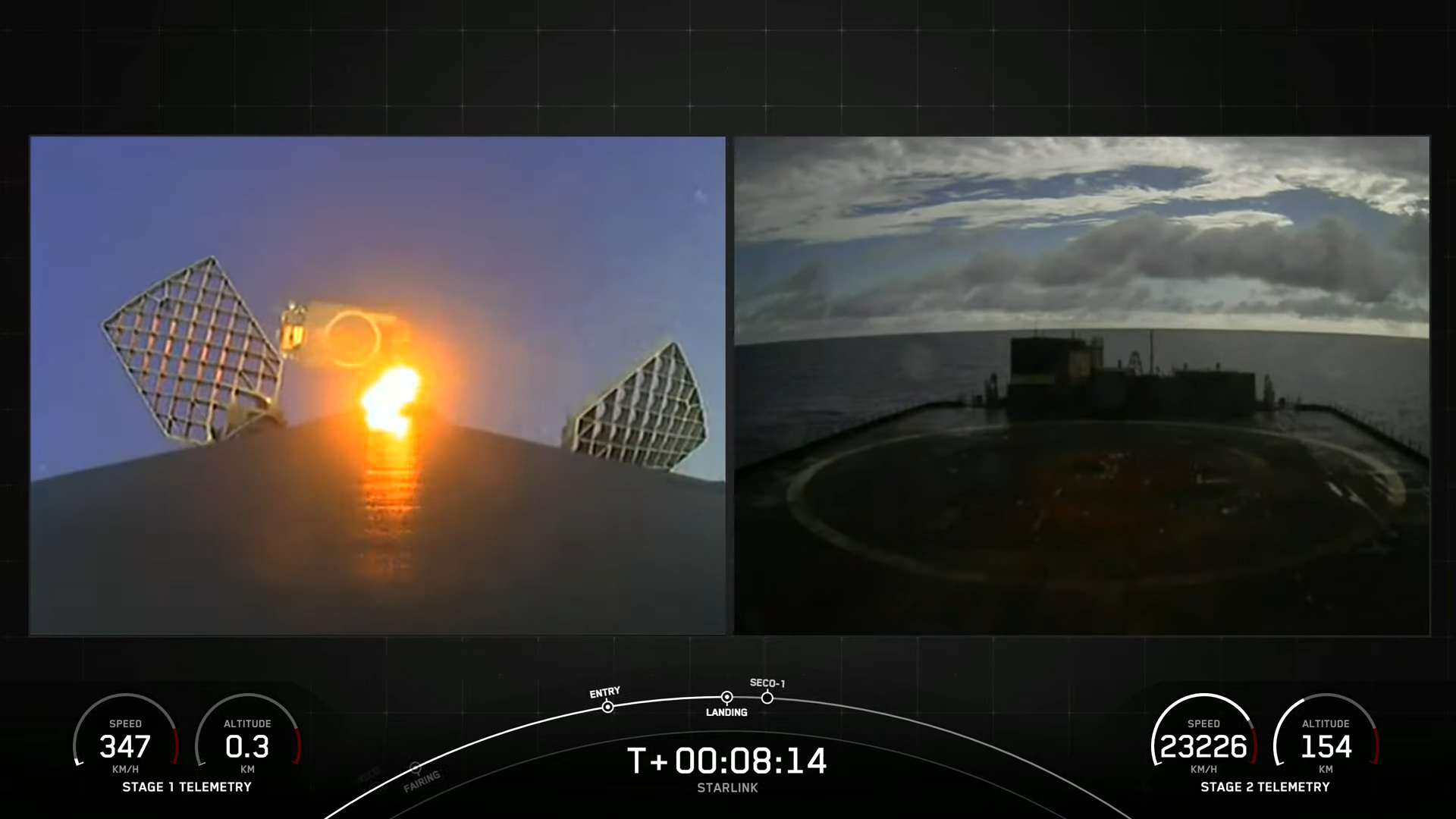
The V2 Minis boast three to four times greater “usable” bandwidth than their Starlink predecessors. “V2 Minis include key technologies—such as more powerful phased-array antennas and the use of E-Band for backhaul—which will allow Starlink to provide 4x more capacity per satellite than earlier iterations,” SpaceX explained. “Among other enhancements, V2 Minis are equipped with new argon Hall thrusters for on-orbit maneuvering.”
With this morning’s launch, 88 Starlink V2 Minis have now been launched in the first half of 2023 on four Falcon 9 missions. Between May 2019 and this morning, well north of 4,400 production-design Starlinks have been placed into orbit, with 877 launched this year alone.
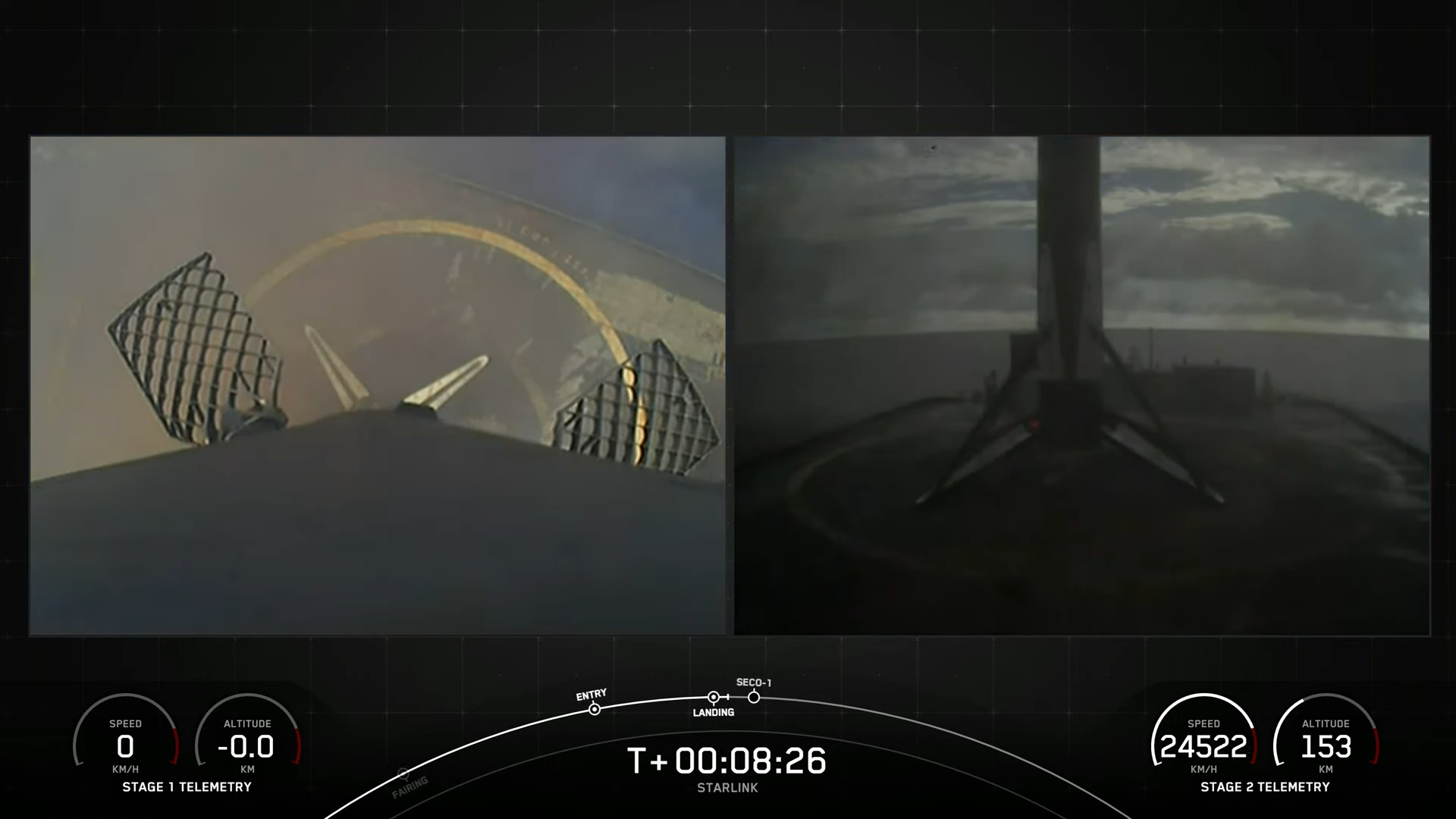
The small satellites facilitate high-speed and low-latency internet provision across more than 50 sovereign nations and international markets spanning North and South America, Europe, Asia, Oceania and Africa. In the last few weeks alone, Panama and Mozambique officially signed up to Starlink.
Florida-based intercity operator Brightline revealed last month that it has adopted the network on its trains, marking the first passenger rail service in the world to do so. And El Salvador’s Ministry of Education has begun integrating Starlink capability into its schools to help close the digital divide between urban and remote rural communities.
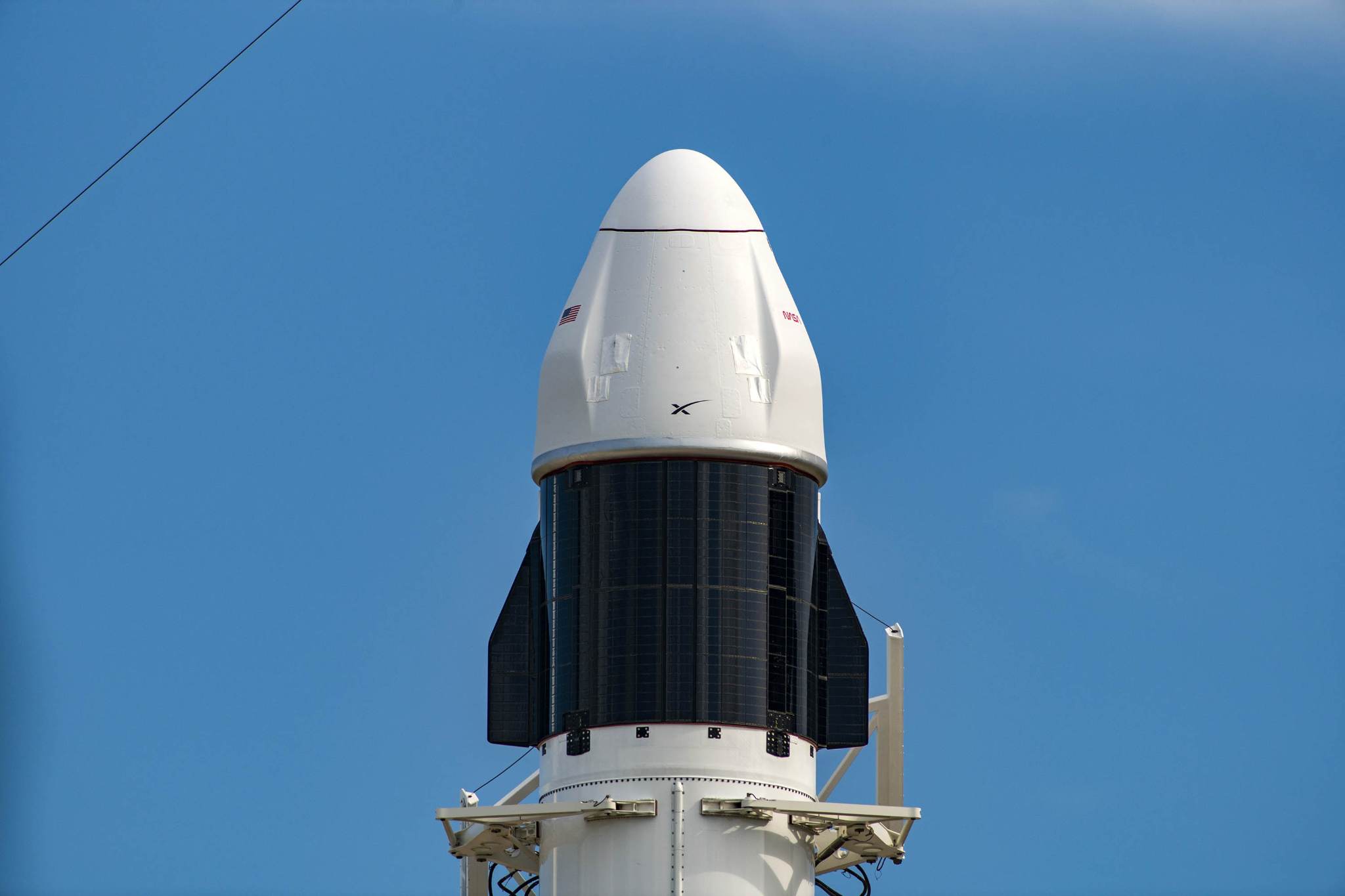
Attention now turns to KSC’s Pad 39A, where another Falcon 9—which also boasts a crew-carrying past—stands ready to fly only three hours and 52 minutes later at 12:12 p.m. EDT Sunday. An on-time launch will make this the shortest interval between any two Falcon 9 flights on record, eclipsing the previous record of four hours and 12 minutes set between a pair of missions in March.
As outlined in AmericaSpace’s CRS-28 preview story, this Cargo Dragon carries around 7,000 pounds (3,200 kilograms) of equipment, hardware and 31 dedicated research payloads for the space station. An on-time launch today will produce a docking about 42 hours later at the space-facing (or “zenith”) port of the Harmony node at 6:15 a.m. EDT Tuesday, closely monitored by Expedition 69 astronaut Woody Hoburg.
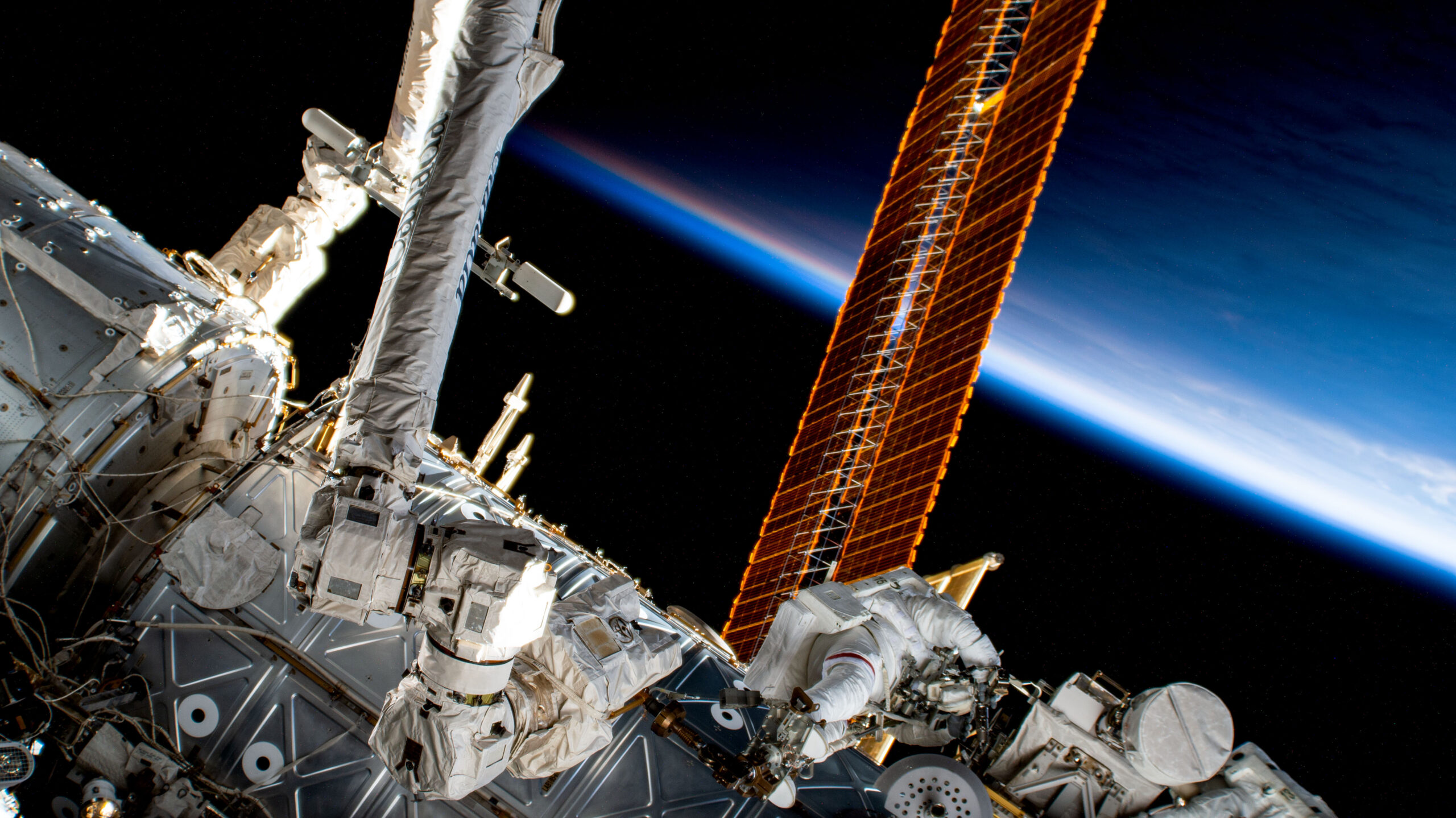
The zenith-port docking is necessary in order that the station’s Canadarm2 robotics assets can extract the third pair of Boeing-built ISS Roll-Out Solar Arrays (iROSAs) from CRS-28’s unpressurized trunk, for emplacement on a Payload Orbital Replacement Unit (ORU) Accommodation (POA) “perch” to await a pair of spacewalks later in June. Beginning as soon as Wednesday, the iROSA pallet will be extracted by Canadarm2 and astronauts Bowen and Hoburg will perform the first of two sessions of Extravehicular Activity (EVA) on 9 June to outfit Power Channel 1A on the starboard-side S-4 truss with a set of arrays.
The second set will be installed on Power Channel 1B on the S-6 truss during a second EVA a week later on 15 June. Both channels received iROSA “modification kits” earlier this spring and cables and insulation were laid during a recent EVA in late April.
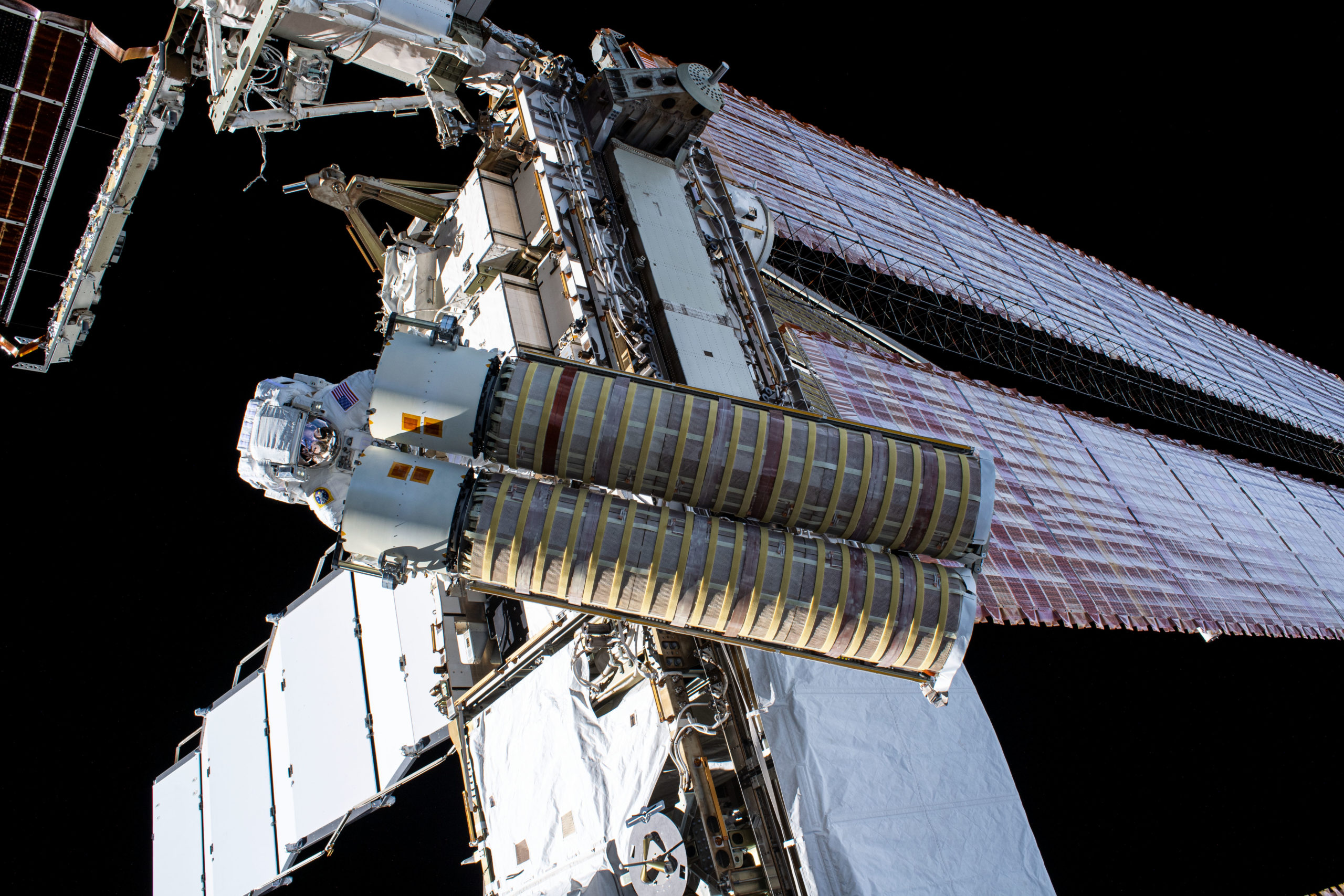
This will mark the third pair of iROSAs to overlay and “shadow” six of the eight “legacy” ISS Solar Array Wings (SAWs), which were delivered to the station by the Space Shuttle between November 2000 and March 2009. The new arrays will support future ISS expansion and customers’ burgeoning payload needs by increasing total electrical output by more than 30 percent, from 160 kilowatts to 215 kilowatts.
Also aboard CRS-28 are a multitude of research payloads, including Plant Habitat-3 (PH-3), led by teams at the University of Florida, which seeks to assess if plants grown in space can transfer their genetic adaptations to the next generation of plants and if any observed changes continue or stabilize. The Genes in Space-10 investigation will test techniques for measuring the length of “telometers”: genetic structures which protect human chromosomes and are known to shorten with age-related wear.
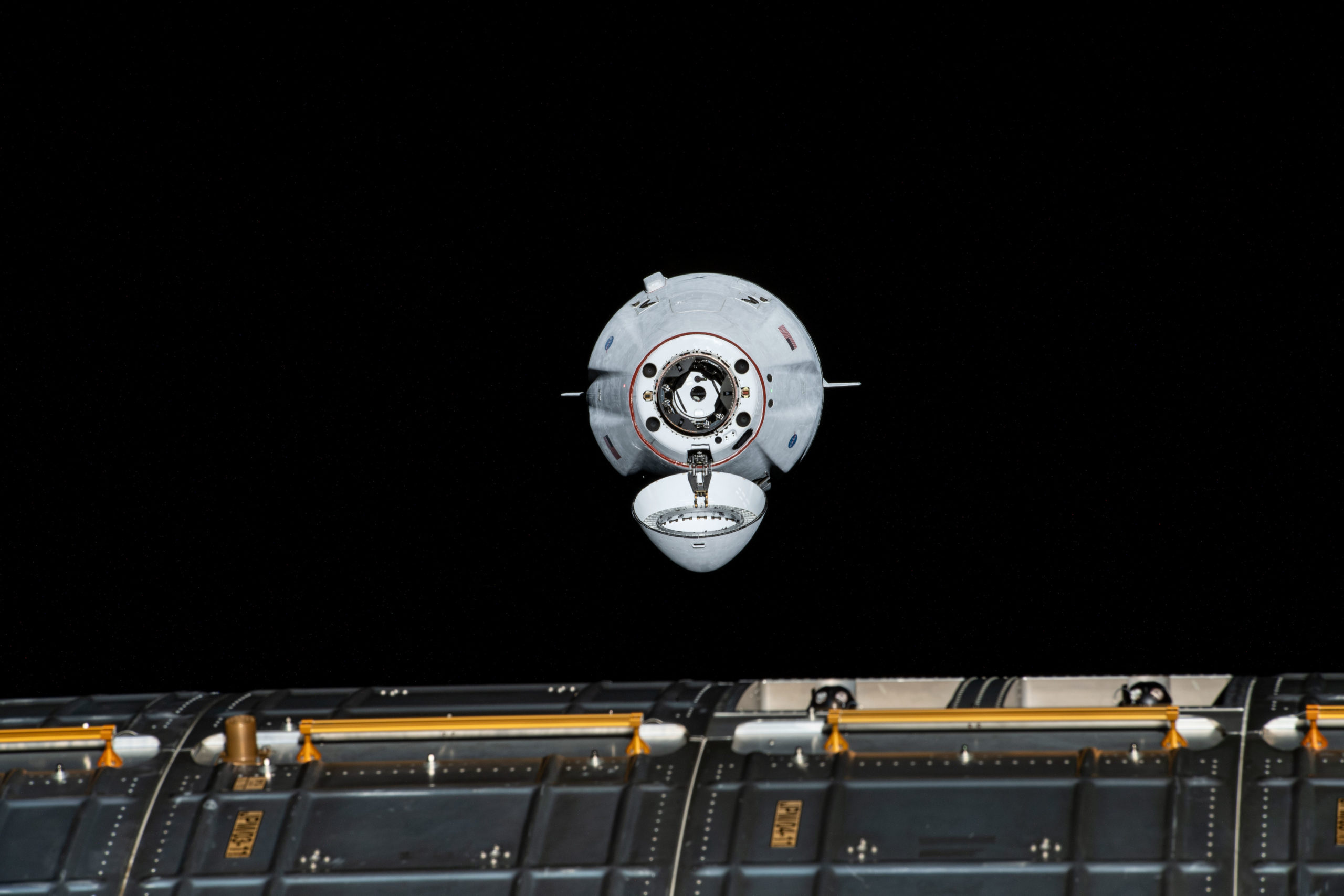
NanoRacks are providing a pair of CubeSats for future deployment from the station. One will observe arctic ice, permafrost thaw, forests and Canada’s northern extremities using a fisheye camera and algorithms for greater spacecraft control, whilst the other will study the “weathering” of geological samples from direct solar and cosmic background radiation to assess the visibility of changes over short time scales.
Elsewhere, the European Space Agency (ESA) has provided its Thor-Davis experiment to examine thunderstorms from low-Earth orbit, with particular emphasis upon inception, frequency and altitude of recently discovered blue discharges. Current expectations are for CRS-28 to remain docked at the ISS for 21 days, with the cargo ship’s departure and return to Earth tentatively scheduled for the end of June.




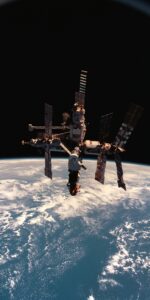
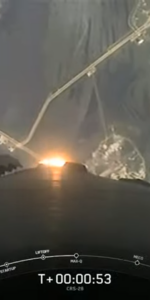
2 Comments
2 Pings & Trackbacks
Pingback:SpaceX Launches CRS-28 Cargo Ship to Space Station - AmericaSpace
Pingback:SpaceX Launches Year’s 50th Falcon 9, As Booster Nine Static-Fires at Starbase - AmericaSpace